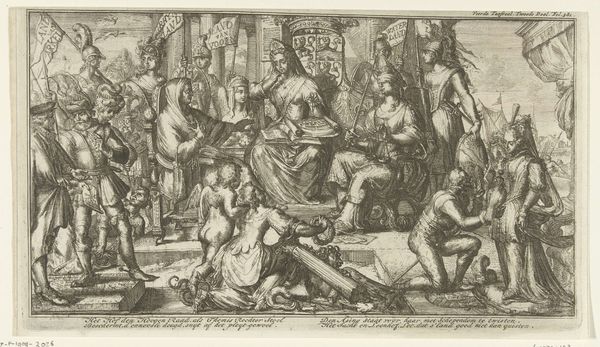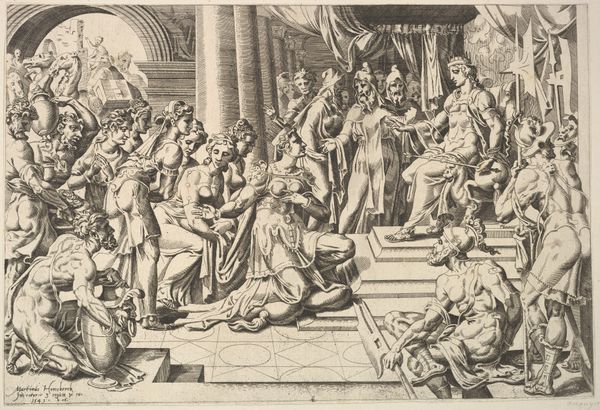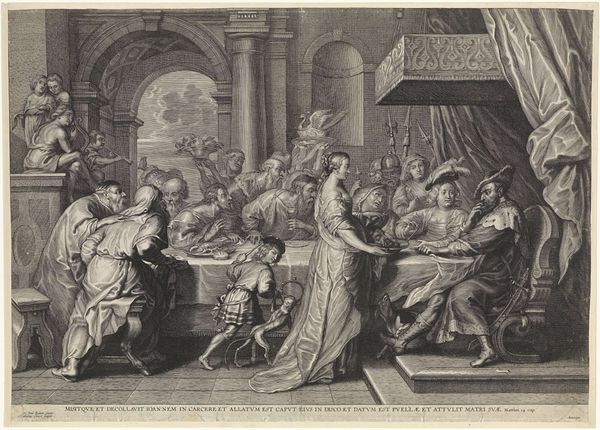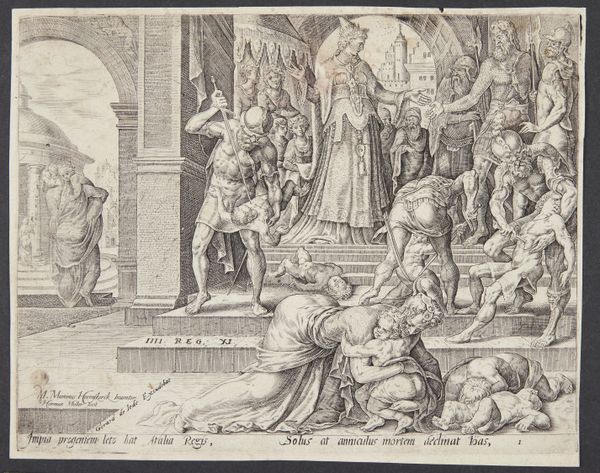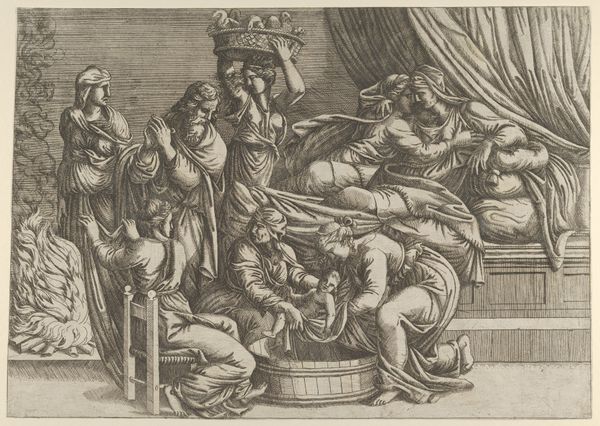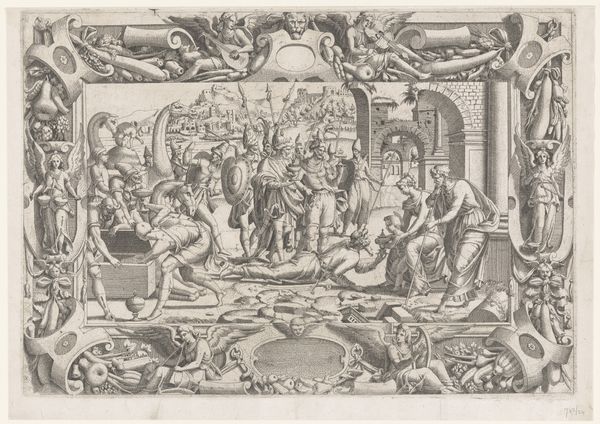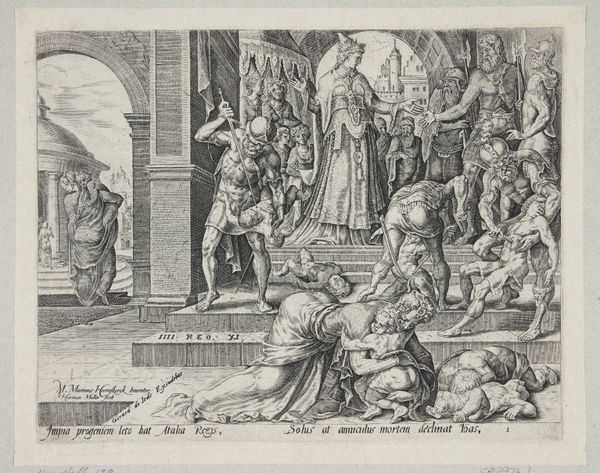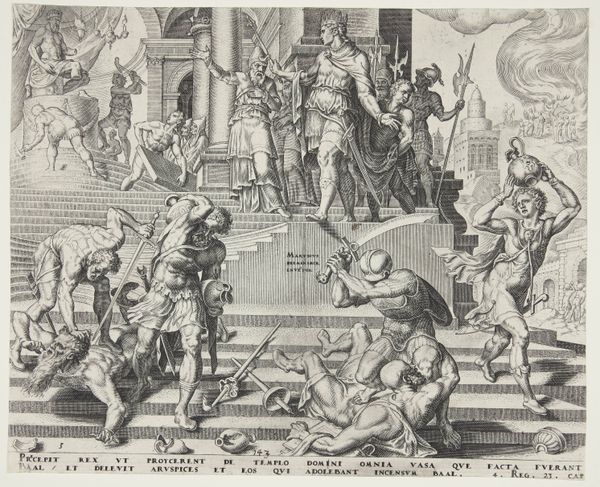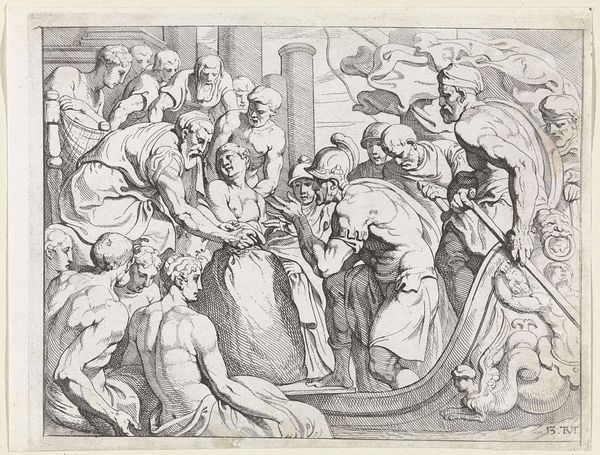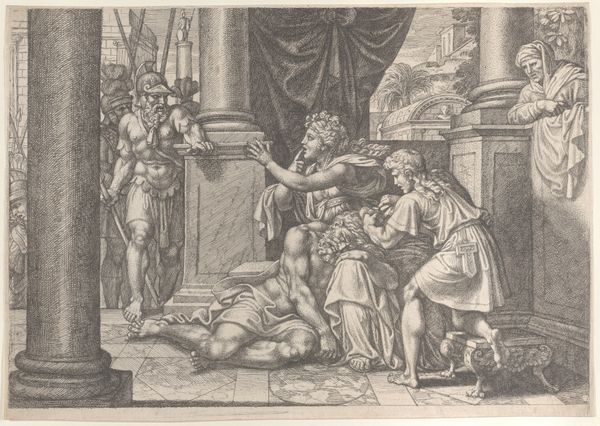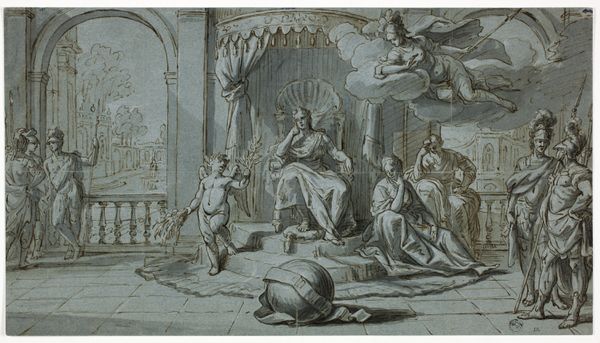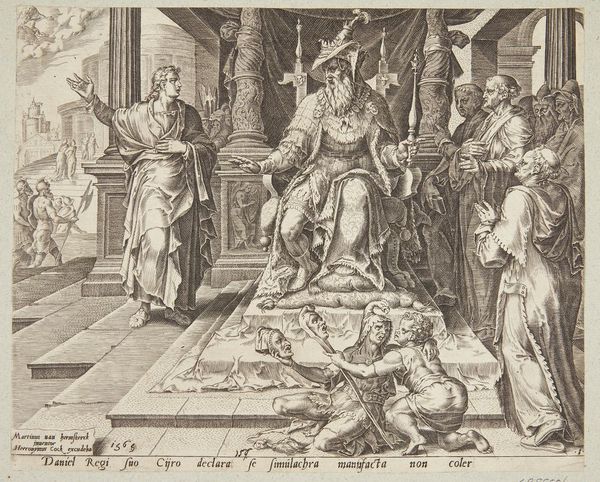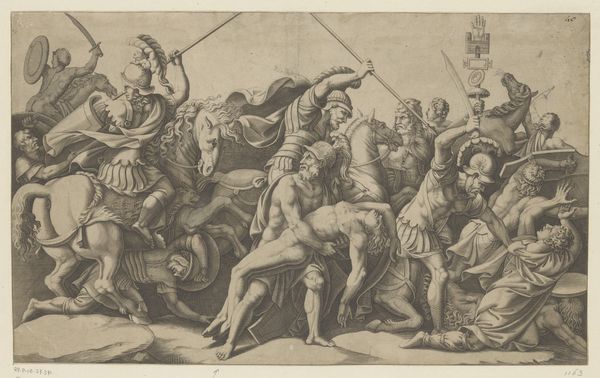
print, engraving
#
portrait
#
allegory
#
baroque
# print
#
classical-realism
#
history-painting
#
engraving
Dimensions: height 416 mm, width 546 mm
Copyright: Rijks Museum: Open Domain
Curator: The allegorical print “Pope Alexander VII on a Throne,” dating between 1655 and 1692 and created by Cornelis Bloemaert, immediately strikes me as an impressive feat of engraving. Look at the intricate details! Editor: I’m drawn to the figure of the armored woman dominating a lion on the right; the sharp lines emphasize strength and control. What message do you think this sends alongside the seated Pope depicted at the other side? Curator: Within the Baroque context, we see that power is central. Consider the deliberate construction: papal authority intertwined with allegorical figures representing Justice, Peace, and other virtues. This layering speaks volumes about the complex narratives artists wove around leadership and governance at that time. Editor: Absolutely, and I think the very medium – the act of engraving itself, with its demanding technique and the materials required – echoes this controlled strength. The process reinforces the visual message of authority. Was it created for distribution, intended to cement an image of power across the population? Curator: Exactly. The act of reproducing the Pope’s image through printmaking meant wider accessibility. This brings up interesting questions of spectatorship and how disseminated images influence perceptions of authority, class and gender. We need to recognize the gendered dimension in how we understand these notions and consider which bodies get inscribed into history. Editor: Thinking about production further, the skilled labor needed to create this also hints at a whole network of workshops. Was Bloemaert also making art for less affluent patrons at the same time or was he attached solely to producing religious art for the Church? Curator: I see your point about workshops, we are clearly reminded of the physical work needed. The print makes evident the values promoted at that time, like peace and justice under the Papal reign. When viewed from a contemporary perspective, those representations are now perceived through lenses of power dynamics, gender performativity, race, and colonialism. Editor: That reframing through our own lens makes me reflect that even the decision to produce this engraving, a somewhat ‘democratic’ medium, might have had implications on labor conditions and power at that time, something worth examining through art production practices in general. Curator: Precisely, those material practices and labor conditions reveal and influence how those intersectional relations of power are materialized into historical legacies, as displayed here in the majestic Rijksmuseum collection.
Comments
No comments
Be the first to comment and join the conversation on the ultimate creative platform.
